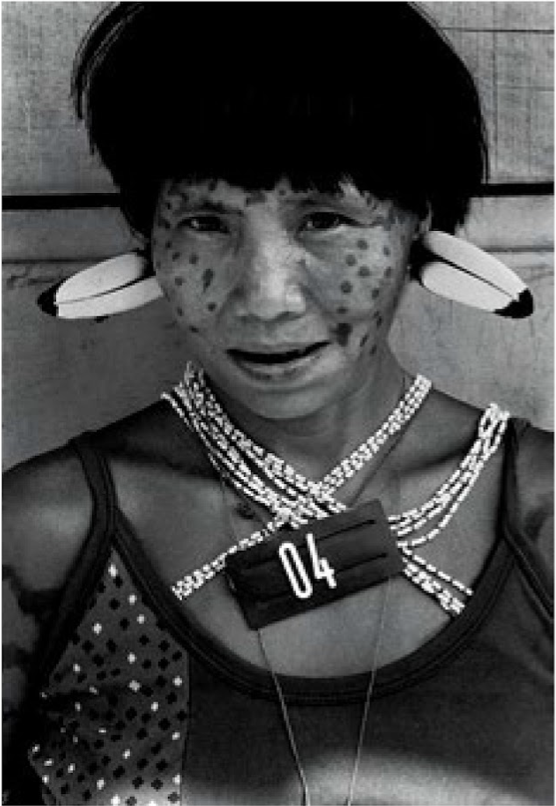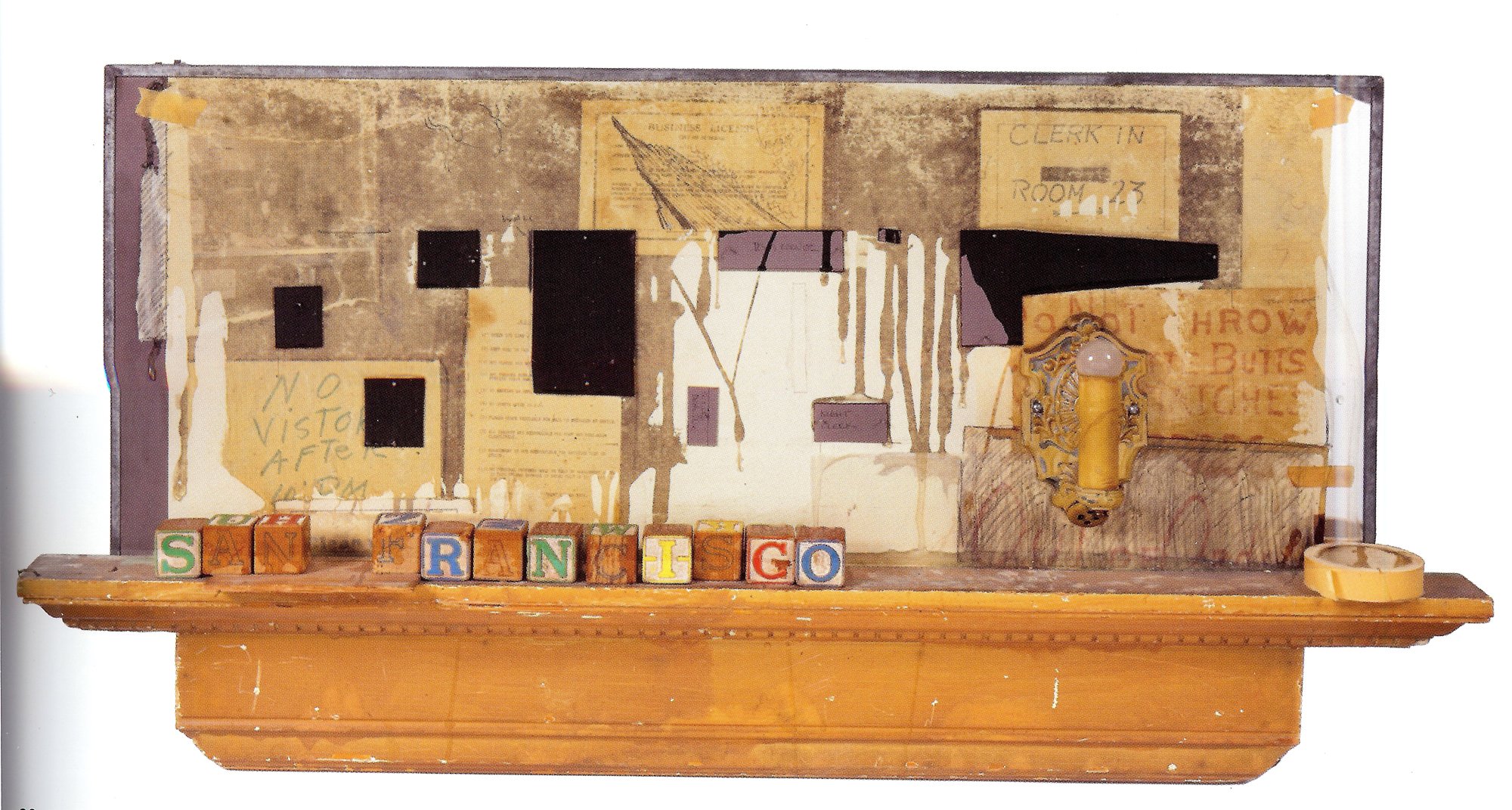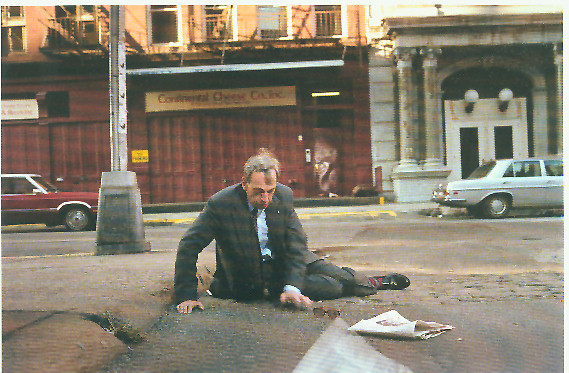
© » KADIST
Claudia Andujar
In 1980, with the construction of highways in Indigenous territories, an epidemic was brought to the Yanomami region. As the Yanomami do not have first names, it was necessary to give them numbers to indicate that they had already been vaccinated and identify each one for their medical records. From this series of events, Claudia Andujar’s Marcados series was born: what was supposed to be a mere photographic record, for organizational purposes, ended up raising a big question about the “labels” given to people in the construction of societies.

© » KADIST
Edward Kienholz
Untitled (San Francisco) was made in Idaho in 1984 and was facetiously dedicated to Henry Hopkins, the then director of the San Francisco Museum of Art who added “modern” to its name. Assembled from the remnants and found objects from a hotel room, including a collage, shelf and small lamp, this playful piece—a satirical shrine of sorts—echoes the decidedly un-modern spirit of San Francisco’s bohemian culture. Kienholz’s works, with their critical and anti-establishment content, are often linked to the 1960s Funk Art movement in the Bay Area.

© » KADIST
José Leonilson
O Africano (1984) is a large acrylic painting on canvas, made early in the artist’s career, and directly references both Leonilson’s artistic precursors and his desire to imagine and capture what it means to be Brazilian. It is about the importance for many Brazilians of their African ethnic and cultural heritage.

© » KADIST
Claudia Andujar
In 1980, with the construction of highways in Indigenous territories, an epidemic was brought to the Yanomami region. As the Yanomami do not have first names, it was necessary to give them numbers to indicate that they had already been vaccinated and identify each one for their medical records. From this series of events, Claudia Andujar’s Marcados series was born: what was supposed to be a mere photographic record, for organizational purposes, ended up raising a big question about the “labels” given to people in the construction of societies.

© » KADIST
Claudia Andujar
In 1980, with the construction of highways in Indigenous territories, an epidemic was brought to the Yanomami region. As the Yanomami do not have first names, it was necessary to give them numbers to indicate that they had already been vaccinated and identify each one for their medical records. From this series of events, Claudia Andujar’s Marcados series was born: what was supposed to be a mere photographic record, for organizational purposes, ended up raising a big question about the “labels” given to people in the construction of societies.

© » KADIST
Claudia Andujar
In 1980, with the construction of highways in Indigenous territories, an epidemic was brought to the Yanomami region. As the Yanomami do not have first names, it was necessary to give them numbers to indicate that they had already been vaccinated and identify each one for their medical records. From this series of events, Claudia Andujar’s Marcados series was born: what was supposed to be a mere photographic record, for organizational purposes, ended up raising a big question about the “labels” given to people in the construction of societies.
Claudia Andujar
Claudia Andujar was born in Switzerland in 1931, and then moved to Oradea, on the border between Romania and Hungary, where her paternal family, of Jewish origin, lived...
Edward Kienholz
- location: Los Angeles, California
- year born: 1927
- gender: male
- nationality: American
- home town: Fairfield, Washington
Philip-Lorca diCorcia
The works of Philip-Lorca diCorcia oscillate between two possible definitions of photography – from a recording system in the tradition of documentary and a system of representation in the tradition of fiction...

